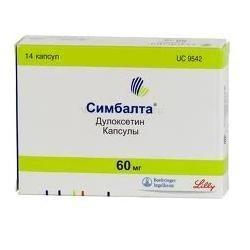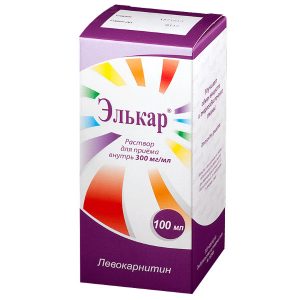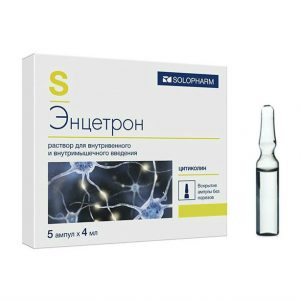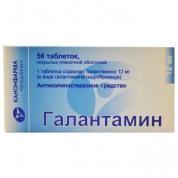Description
packaging 14 pcs
Pharmacological action of
Simbalta has an antidepressant effect. Duloxetine is an antidepressant, serotonin and norepinephrine reuptake inhibitor, and weakly inhibits dopamine uptake, without significant affinity for histaminergic, dopaminergic, cholinergic and adrenergic receptors. The mechanism of action of duloxetine in the treatment of depression is to suppress the reuptake of serotonin and norepinephrine, resulting in increased serotonergic and noradrenergic neurotransmission in the central nervous system. Duloxetine has a central mechanism for suppressing pain, which, first of all, it is manifested by an increase in the threshold of pain sensitivity in case of pain syndrome of neuropathic etiology.
Indications
Depression.
A painful form of diabetic neuropathy.
Contraindications
Hypersensitivity to the drug.
Concomitant use with monoamine oxidase inhibitors (MAOIs).
Uncompensated angle-closure glaucoma
Caution
For exacerbation of manic / hypomanic state, epileptic seizures, mydriasis, impaired liver or kidney function, with the likelihood of suicidal attempts.
Use during pregnancy and lactation
Due to insufficient experience with the use of Simbalta during pregnancy, the drug should be prescribed during pregnancy only if the potential benefit to the patient significantly exceeds the potential risk to the fetus. Patients should be warned that in the event of pregnancy or its planning during treatment with duloxetine, they need to inform their doctor.
Due to the lack of experience in the use of duloxetine in women during breastfeeding, breastfeeding during therapy with duloxetine is not recommended.
Composition
1 caps. contains duloxetine (as hydrochloride) 60 mg
Dosage and administration of
Simbalt is administered orally, regardless of food intake.
Capsules should be swallowed whole without chewing or crushing. Do not add Simbalt to food or mix with liquids, because this can damage the enteric capsule.
The recommended starting dose for Symbalta is 60 mg once daily. If necessary, it is possible to increase the dose to a maximum dose of 120 mg per day in 2 divided doses. A systematic assessment of taking Simbalta at a dose of over 120 mg has not been conducted.
In the terminal stage of chronic renal failure (CC less than 30 ml / min), the initial dose of Symbalta is 30 mg once a day.
Side effects
Most often (10%): dizziness (except vertigo), dry mouth, nausea, constipation, sleep disturbances (drowsiness or insomnia), headache (less than with placebo). Less often (1-10%): diarrhea, vomiting, tremor, decreased appetite, weight loss, weakness, increased sweating, hot flashes, blurred vision, anorgasmia, decreased libido, delayed and impaired ejaculation, and erectile dysfunction. A slight increase in fasting blood glucose in patients with a painful form of diabetic neuropathy. Dizziness, nausea, headache was noted as frequent adverse effects with the withdrawal of duloxetine.
Drug Interaction
Drugs metabolised by CYP1A2. The concomitant use of duloxetine (60 mg 2 times daily) had no significant effect on the pharmacokinetics of theophylline metabolised by CYP1A2. Duloxetine is unlikely to have a clinically relevant effect on the metabolism of CYP1A2 substrates.
CYP1A2 Inhibitors. Because CYP1A2 is involved in duloxetine metabolism, concomitant administration of duloxetine with potential CYP1A2 inhibitors is likely to increase duloxetine concentrations. A potent inhibitor of CYP1A2 fluvoxamine (100 mg once daily) reduced the mean plasma clearance of duloxetine by about 77%. Caution should be exercised when administering duloxetine with CYP1A2 inhibitors (eg, some quinolone antibiotics) and lower doses of duloxetine should be used.
CYP2D6 metabolizing drugs. Duloxetine is a moderate CYP2D6 inhibitor. When receiving duloxetine at a dose of 60 mg 2 times a day, together with a single dose of desipramine, CYP2D6 substrate, AUC of desipramine is increased 3 times. Concomitant administration of duloxetine (40 mg 2 times daily) increased the stable AUC of tolterodine (2 mg 2 times daily) by 71%, but did not affect the pharmacokinetics of the 5-hydroxyl metabolite. Therefore, caution should be exercised when using duloxetine with drugs, which are mainly metabolized by the CYP2D6 system and have a narrow therapeutic index.
CYP2D6 inhibitors. Since CYP2D6 is involved in the metabolism of duloxetine, concomitant use of duloxetine with potential CYP2D6 inhibitors may lead to increased concentrations of duloxetine.
Paroxetine (20 mg once daily) reduced the average clearance of duloxetine by about 37%. Caution should be exercised when using duloxetine with CYP2D6 inhibitors (eg SSRIs).
CNS drugs. Caution should be exercised when using duloxetine with other drugs and agents that affect the CNS, especially those that have a similar mechanism of action, including alcohol.
Drugs that bind highly to blood proteins. Duloxetine is highly bound to plasma proteins (> 90%). Therefore, the administration of duloxetine to a patient who is taking another drug, which binds to plasma proteins to a high degree, can increase the concentration of free fractions of both drugs.
Overdose
Several cases of overdose have been reported with single-dose ingestion up to 1400 mg of the drug with no fatal effects. An overdose may be accompanied by the following symptoms: tremor, clonic convulsions, ataxia, vomiting and decreased appetite.
Overdose treatment. The specific antidote is unknown. It is recommended to monitor the cardiac activity and monitor the main indicators of vital activity, along with the conduct of symptomatic and supportive treatment.
Storage conditions
At a temperature of 15-30 ° C, out of the reach of children.
Expiration
2 years.
Active ingredient
Duloxetine
dosage form
dosage form
capsules




